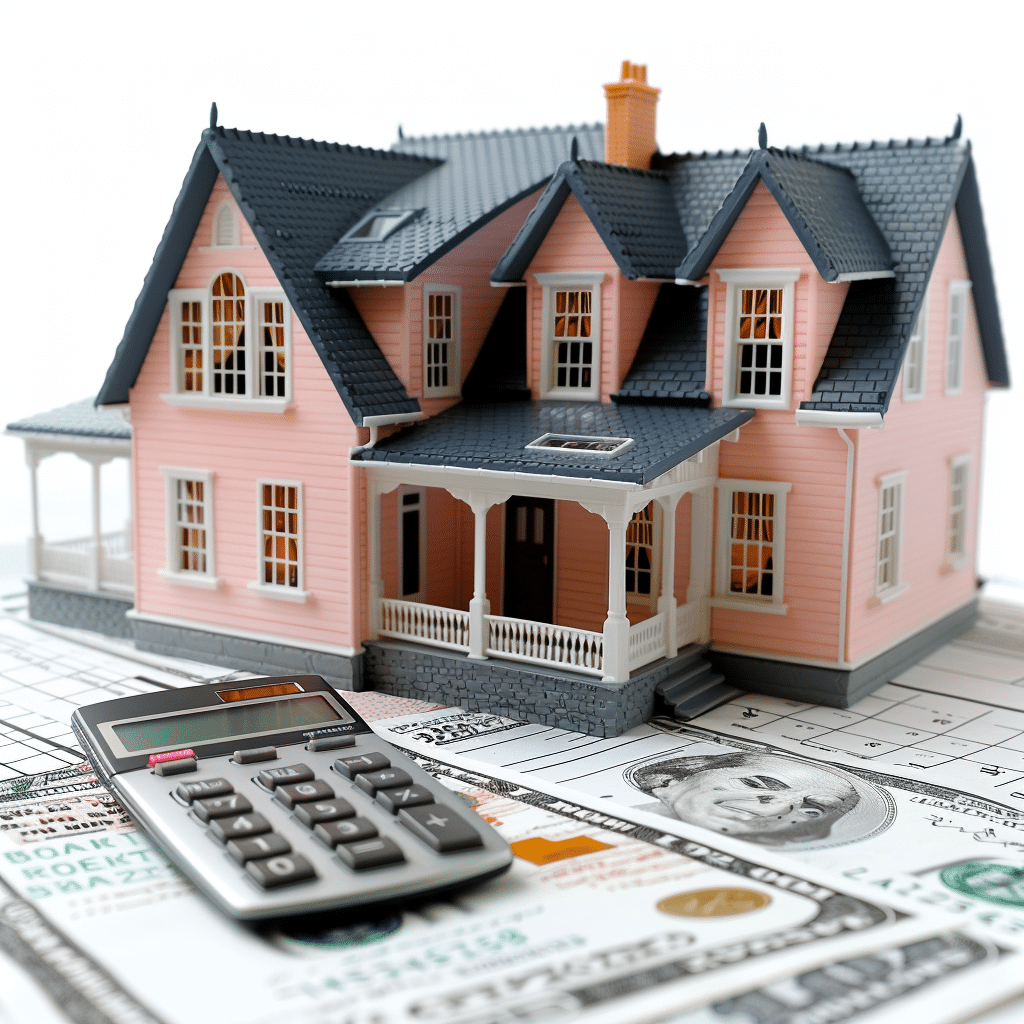Deciphering What Is the Interest Rate on a Home Loan: A Primer
When you’re in the market for a new home, stepping into the financial nitty-gritty can feel overwhelming. So, what exactly is the interest rate on a home loan? Well, think of it as the price you pay for borrowing money. It’s the lender’s slice of the pie for extending you the service of a loan. Calculated as a percentage of the loan amount, the interest rate is tacked onto your monthly payments, significantly impacting the total cost of your new haven over time.
Understanding interest rates is like learning a new language—the better you get, the more it “clicks.” Taking on a home loan is no simple shopping spree, so comparing rates is kind of like hunting for bargains. You know what they say, “Look after the pennies, and the dollars will look after themselves.”

Historical Perspective: How Rates Have Changed Over Time
Let’s take a little journey back in time. Historically, mortgage interest rates have swayed like a jazz melody—full of rhythm and unpredictability. They’ve been influenced by global events, such as economic meltdowns and policy decisions. There have been moments when they’ve soared, making borrowing as tough as nailing jelly to a wall; other times, they’ve been so low that snagging a mortgage felt like a veritable steal.
In the rosy days of the past, if you snagged a rate that would make today’s homebuyer green with envy, you were sitting pretty. But with the rollercoaster ride of the economy, knowing where we’ve been helps us guess where we might be headed.

| Factor | Description | Potential Impact on Interest Rate |
| Credit Score | A measure of a borrower’s creditworthiness based on their credit history. | Higher scores may lead to lower rates. |
| Loan Type | The type of loan (e.g., fixed-rate, adjustable-rate, FHA, VA). | Some loan types have lower initial rates but may adjust over time. |
| Loan Term | The duration of the loan, typically in years (e.g., 15, 20, 30). | Shorter terms often have lower rates but higher monthly payments. |
| Down Payment | The amount paid upfront as a percentage of the home price. | Larger down payments can result in lower rates. |
| Property Location | The geographical location of the property. | Rates can vary by state and locality. |
| Interest Rate Type | Rates can be fixed for the loan term or variable/adjustable. | Fixed rates are constant; adjustable rates can fluctuate. |
| Loan Amount | The total amount borrowed. | Larger loans can sometimes have higher rates. |
| Economic Indicators | General economic conditions, such as inflation and the federal funds rate. | Economic strength or weakness can impact rates. |
| Lender Specifics | Each lender has their own criteria and rates. | Shopping around can uncover variances in offered rates. |
| Property Use | Whether the property is a primary residence, secondary residence, or investment. | Primary homes often get the best rates; investment properties may have higher rates. |
| Lock-in Rate | Option to ‘lock in’ an interest rate for a period to protect against increases. | Usually offered as a feature at application, sometimes for a fee. |
| Points Purchased | Borrowers can pay upfront to lower their interest rate. | Each point purchased typically lowers the rate by 0.25%. |
Current Trends in Home Loan Interest Rates
Switching gears to today’s climate, what is the interest rate on a home loan looking like? It’s a question on the tip of everyone’s tongue, and for a good reason—as of now, rates have been nudging up, with whispers of inflation and monetary policies stirring the pot.
For the latest scoop, head over to Mortgage Rater’s What Is The interest rate right now and dive deep into the nitty-gritty of current stats, standing at an average that could either make you jump for joy or give you a slight case of the hiccups.
Key Factors That Determine Your Home Loan Interest Rate
Naturally, you’re wondering, “What’s going to determine the rate I get?”. Here’s the rundown:
Your financial report card lays it all out there—if you’ve been making it rain (on time!) with your bills, lenders might just cozy up with more favorable rates.
In the eyes of the lender, it’s all about risk. A lower LTV, which means you’re borrowing less against the home’s value, could spell out lower interest rates.
Steady as she goes—a consistent job and income can be your ace in the hole for snagging a lower rate.
Opting for a fixed rate might be the ticket if a predictable monthly payment sounds like music to your ears. Or, ride the wave of an adjustable rate if you fancy gambling on future market shifts.
Typically, the shorter the loan term, the less total interest you’ll dish out; but this often comes with a steeper monthly payment, so balance is key.
The Role of Government Policies in Shaping Interest Rates
Now, don’t overlook the hand the government has in this. With policies that can sway the direction of the wind, rates often respond accordingly. The more the government tightens the reins, the more likely lenders could push rates north to cushion any jolts.
How the Federal Reserve’s Decisions Directly Affect Home Loan Rates
Ah, the Fed—they’re the conductors of our interest rate symphony. With the swing of their baton, aka the federal funds rate, they influence whether rates hum a lullaby or a battle hymn. Drawing connections from their policy decisions to your mortgage rate isn’t a far cry from the truth, so keep an ear to the ground and an eye on their moves for cues on where rates might boogie.
Comparing Home Loan Interest Rates Among Top Lenders
Let’s take Wells Fargo, Chase Bank, and Bank of America and play a little game of comparison. Each of these big shots offers their own spin on rates, dangling special programs and incentives that could sweeten the pot or add a little sour. Remember, you’re hunting for that golden ticket, so dig into the details.
Understanding APR vs. Interest Rate
Don’t trip over the jargon—APR (Annual Percentage Rate) and the interest rate aren’t conjoined twins. While the nominal interest rate whispers sweet nothings about what you’ll shell out each year, the APR gives you the full monty—lender fees and all. It’s the more accurate measure of the true cost of your loan, and it doesn’t skirt around the less glamorous details.
Variable vs. Fixed Interest Rates: Pros, Cons, and Current Trends
Weighing the pros and cons of variable vs. fixed interest rates should be as careful as choosing your battles. With fixed rates, what you see is what you get, providing a haven of predictability. But the variable rates? They’re the wild cards of the mortgage world—a gamble that could either save you a bundle or cost you a pretty penny. Keep tabs on the patterns to stay in the know.
How to Secure the Best Interest Rate for Your Home Loan
Scouting the best interest rate is like playing the market—it demands savvy and timing. Hitting up multiple lenders, chunking a hefty down payment, and locking in an interest rate at the opportune moment can be game-changers. And don’t snooze on mortgage points—they might just be your ticket to rate nirvana.
Predictions for Future Home Loan Interest Rates in the Coming Years
Crystal ball predictions are risky business, but based on economic tea leaves, it seems rates may continue to ebb and flow. Buckle up and strategize—knowing how to ride out the waves can make all the difference.
Innovative Wrap-Up: Next Steps in Your Home Loan Interest Rate Journey
With a finger on the pulse and eyes wide open, staying ahead in the interest rate game demands alertness and smarts. Let sites like Mortgage Rater and its insightful write-ups, such as What Is The housing interest rate and What Is The interest rate on home Loans, be your trusty guides as you venture forth. And who knows, like Elvira Lind and Tye Sheridan, crafting your own success narrative in the homebuying saga could become a reality. Even Gwen Stefani and Blake Shelton would nod in agreement—making informed decisions leads to a sweet, sweet life.
So go on, get cracking, and may the rates be ever in your favor!
What Is the Interest Rate on a Home Loan?
You might be scratching your head, pondering over “what is the interest rate on a home loan”, while daydreaming about cozy evening gatherings around a Smores maker, but the concept is genuinely simpler than you might think. Lenders consider several factors when deciding the interest rate to slap on your mortgage. Still hanging with me? Awesome! Much like a band harmonizing their tunes, your credit score, income, debt levels, and down payment all play a part in this financial symphony. Now, while a higher credit score can snag you a lower rate, don’t go overboard in boosting that credit line. You might just hit a sour note, as there are Disadvantages Of increasing Your credit limit that could affect your mortgage conditions.
Meanwhile, as curious as it sounds, the housing market can be as unpredictable as celebrity couples. Just when you think you’ve got it all figured out, surprise! Just like that unexpected pairing of Gwen Stefani And Blake shelton, interest rates can soar or plummet, sometimes seemingly on a whim, but mostly in response to economic changes and policies. It’s crucial, therefore, to keep an eye on these rates, not unlike how pop culture enthusiasts watch for the next twist in the celebrity romance saga. By staying informed, you’ll be on top of your game, ready to lock in a rate before it jumps higher than Gwen’s vocal range on a hit single.
So, what’s the takeaway? Understanding home loan interest rates is less about deciphering complex formulas and more about grasping how different facets of your financial life and broader economic factors come together. Think of it as a melting pot of numbers, policies, and your personal fiscal habits – all striving to achieve that sweet “just right” rate you can comfortably afford. Stay tuned and alert; knowledge is key if you’re aiming to snag that dream home without getting stung by a rate that stings!



